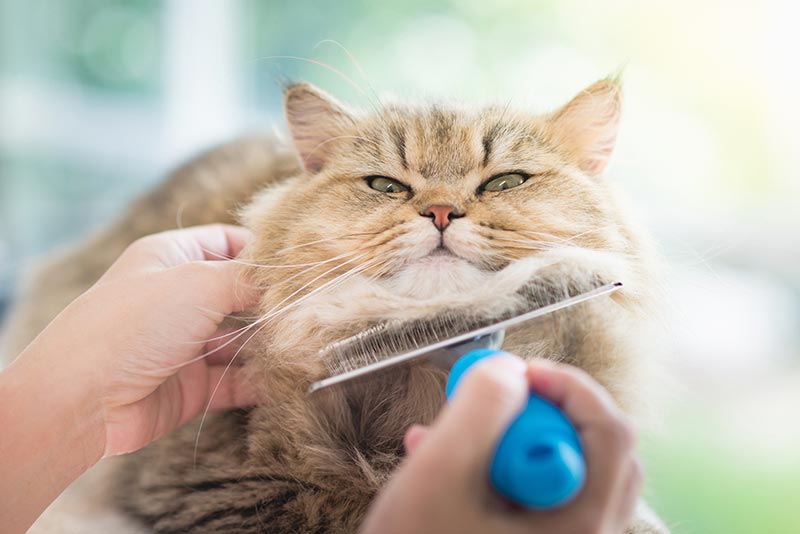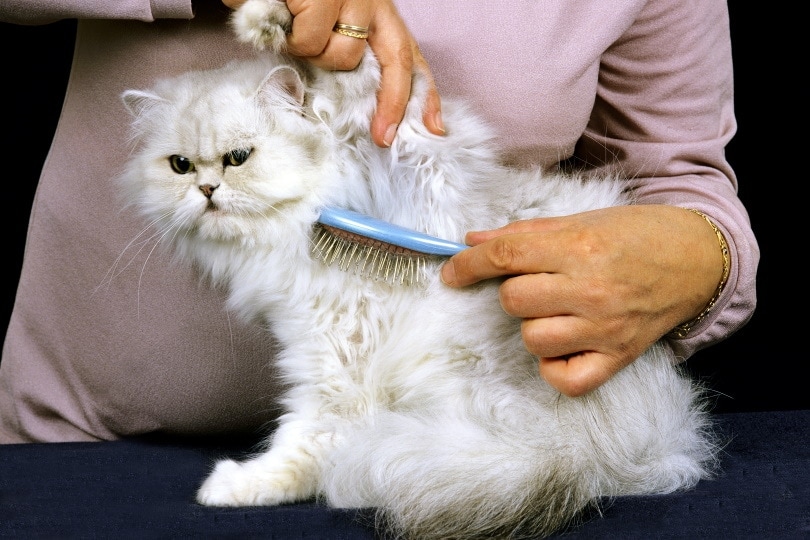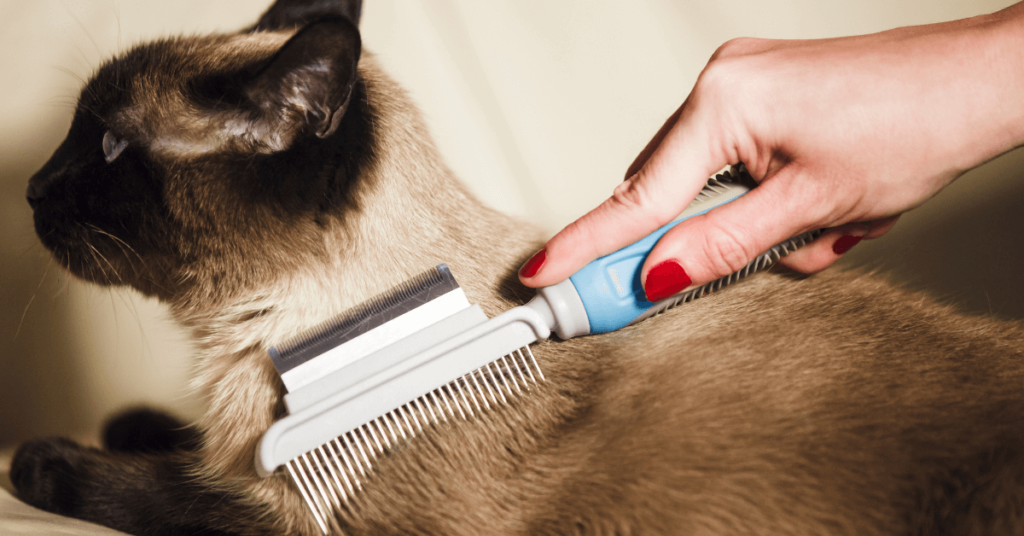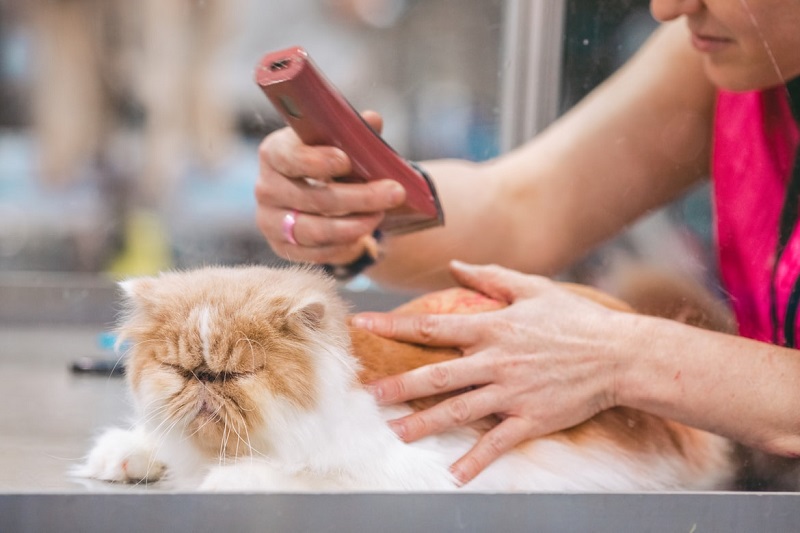So, you want to groom your Persian cat, huh? Well, you’ve come to the right place! Grooming your fluffy feline friend is not only important for their health and hygiene, but it can also be an enjoyable bonding experience for the both of you. In this article, we’re going to delve into the best practices for grooming your Persian cat, so buckle up and get ready to become a pro cat groomer!
Now, when it comes to grooming your Persian cat, there are a few things you need to keep in mind. First and foremost, their long, luxurious fur requires regular brushing to prevent matting and tangling. We’ll discuss the different types of brushes and techniques you can use to keep your cat’s coat looking fabulous. We’ll also cover other essential grooming tasks such as nail trimming, ear cleaning, and dental care. Trust me, by the end of this article, you’ll have all the tools and knowledge you need to become a grooming guru for your Persian cat.
But hold on, we’re not done just yet! In addition to grooming tips and techniques, we’ll also provide you with a list of 200 relevant topics related to Persian cats. Whether you’re interested in their history, behavior, or health, we’ve got you covered. And to make sure you have everything you need, we’ll even throw in 10 commonly asked questions about Persian cats at the end of each post. So, get ready to become the ultimate source of information for all things Persian cat-related.
Grooming Your Persian Cat: Best Practices
Grooming is an essential aspect of caring for your Persian cat. With their long, luxurious coats, Persian cats require regular grooming to keep their fur healthy, prevent matting, and maintain a clean and comfortable living environment. In this article, we will discuss the best practices for grooming your Persian cat, including brushing and combing their coat, preventing matting and tangles, bathing, and trimming their nails.

Brushing and Combing Persian Cat’s Coat
One of the most important grooming tasks for Persian cat owners is regular brushing and combing of their coat. Persian cats have long, dense fur that tends to mat easily if not properly maintained. To keep their coat in top condition, it is recommended to brush them daily using a high-quality, wide-toothed cat brush. This will help remove loose hair, prevent matting, and distribute natural oils throughout the fur.
When brushing your Persian cat, start from the head and work your way down, carefully untangling any knots or tangles you come across. Be gentle and patient, as pulling or tugging on the fur can cause discomfort and stress for your cat. Pay extra attention to the areas behind the ears, under the armpits, and around the tail, as these are common areas for mats to form.
After brushing, use a fine-toothed comb to remove any remaining tangles and to ensure that the fur is smooth and free from knots. Regular brushing and combing sessions will not only keep your Persian cat’s coat looking beautiful but will also prevent the formation of severe mats that can be painful and difficult to remove.

Preventing Matting and Tangles
To minimize the occurrence of matting and tangles in your Persian cat’s fur, it’s important to establish a regular grooming routine and follow these preventative measures:
-
Daily brushing: As mentioned earlier, daily brushing is key to preventing matting. Make it a habit to set aside a specific time each day for grooming sessions with your Persian cat.
-
Use a detangling spray: If you encounter stubborn tangles or knots while brushing, you can use a detangling spray specifically designed for cats. These sprays help loosen the knots and make them easier to comb out.
-
Trimming hair around sensitive areas: Persians have long hair around their eyes and ears, which can easily become matted. Regularly trim the hair in these areas to reduce the chances of matting and provide better visibility for your cat.
-
Avoid moisture and dirt: Keep your Persian cat away from water unless necessary, as wet fur is more prone to matting. Additionally, try to minimize your cat’s exposure to dirt and debris that can get trapped in their fur and contribute to mat formation.
Remember, prevention is key when it comes to matting. Regular grooming and proper maintenance will save you and your Persian cat from the discomfort and potential health issues associated with severe matting.

Bathing a Persian Cat
Bathing a Persian cat may not be a regular part of grooming, but it is essential to maintain their overall cleanliness and hygiene. Persian cats have a thick, dense coat that can accumulate dirt and oils over time. However, it is important to note that Persian cats should not be bathed more than once every few weeks, as excessive bathing can strip their coat of natural oils and lead to skin dryness and irritation.
When bathing your Persian cat, follow these steps:
-
Prepare the bathing area: Fill a sink, bathtub, or basin with warm water, making sure it is not too hot or cold. Place a non-slip mat at the bottom to prevent your cat from slipping.
-
Gently wet your cat: Use a handheld showerhead or a jug to wet your cat’s fur thoroughly, avoiding their face. Take extra care not to get water in their ears, as this can cause discomfort and increase the risk of ear infections.
-
Apply cat-specific shampoo: Use a gentle, cat-specific shampoo that is free from harsh chemicals. Start from the neck and work your way down, massaging the shampoo into the coat with your fingers. Be careful not to tug or pull on the fur.
-
Rinse thoroughly: Rinse your cat’s fur with warm water until all the shampoo is removed. Ensure that no residue is left behind, as it can cause skin irritation.
-
Towel dry: Gently wrap your Persian cat in a soft towel and pat them dry. Avoid vigorous rubbing, as it can damage their hair.
After bathing, it is important to thoroughly dry your Persian cat, especially the areas that are prone to matting. You can use a blow dryer on the lowest heat setting but be sure to keep it at a safe distance to avoid burning their sensitive skin. Alternatively, you can let your cat air dry in a warm, draft-free room.

Trimming Persian Cat’s Nails
Regular nail trimming is an essential part of grooming for Persian cats. Their sharp claws can cause damage to furniture, carpets, and even their owners if not properly maintained. Trimming your cat’s nails can also reduce the chances of nail breakage and overgrowth, which can lead to discomfort and difficulty in walking.
When trimming your Persian cat’s nails, follow these steps:
-
Choose the right tools: Invest in a pair of high-quality cat nail clippers or a nail grinder. Make sure the clippers are sharp and clean.
-
Find a quiet and comfortable space: Choose a calm and quiet area where your cat feels relaxed. Have treats nearby as positive reinforcement.
-
Gently hold your cat’s paw: Hold your Persian cat’s paw firmly but gently. Press the pad to extend the claws.
-
Identify the transparent area of the nail: Examine the nail and identify the quick, which is the transparent pink area. Be careful not to cut into the quick, as it can cause bleeding and pain.
-
Trim small portions at a time: Gradually trim small portions of the nail, avoiding the quick. If your cat feels uncomfortable or stressed, take a break and resume later.
-
Reward and praise: After trimming each nail, reward your cat with treats and praise to associate the experience with positivity.
If you are unsure or uncomfortable with trimming your Persian cat’s nails, you can seek assistance from a professional groomer or your veterinarian.

Conclusion
Grooming your Persian cat is an important and rewarding part of being a responsible cat owner. Regular brushing and combing, preventing matting and tangles, bathing, and nail trimming are essential practices to keep your Persian cat’s coat healthy, clean, and free from discomfort. Establishing a grooming routine and providing a positive and safe environment will ensure that your Persian cat looks and feels their best. Remember, bonding with your cat during grooming sessions is an added benefit, strengthening your relationship and fostering trust and affection.
Question and Answers
-
Q: How often should I groom my Persian cat? A: It is recommended to groom your Persian cat daily to prevent matting and keep their coat in top condition.
-
Q: What is the best brush for a Persian cat? A: A high-quality, wide-toothed cat brush is ideal for grooming Persian cats. It helps remove loose hair and prevents matting.
-
Q: How do I prevent matting in my Persian cat’s fur? A: Regular brushing, using a detangling spray, trimming hair around sensitive areas, and avoiding moisture and dirt can help prevent matting.
-
Q: How often should I bathe my Persian cat? A: Persian cats should not be bathed more than once every few weeks, as excessive bathing can strip their coat of natural oils.
-
Q: Can I trim my Persian cat’s nails at home? A: Yes, you can trim your Persian cat’s nails at home with the right tools and proper technique. Alternatively, you can seek assistance from a professional groomer or veterinarian.
-
Q: How should I dry my Persian cat after bathing? A: Thoroughly towel dry your Persian cat after bathing, avoiding vigorous rubbing. You can also use a blow dryer on the lowest heat setting at a safe distance.
-
Q: What should I do if I accidentally cut into the quick while trimming my cat’s nails? A: If you accidentally cut into the quick and it starts bleeding, apply gentle pressure with a clean cloth or styptic powder to stop the bleeding. Monitor the area for any signs of infection or discomfort and seek veterinary attention if needed.
-
Q: Can I groom my Persian cat without professional assistance? A: Yes, you can groom your Persian cat without professional assistance. However, if you are unsure or uncomfortable, you can seek help from a professional groomer or your veterinarian.
-
Q: How can I make grooming a positive experience for my Persian cat? A: Make grooming a positive experience by using treats and praise as rewards, establishing a calm and comfortable environment, and being gentle and patient with your cat.
-
Q: What is the best way to introduce grooming to a Persian kitten? A: Start grooming your Persian kitten from an early age to familiarize them with the process. Use positive reinforcement and gradually increase the duration and intensity of grooming sessions as they grow older.
